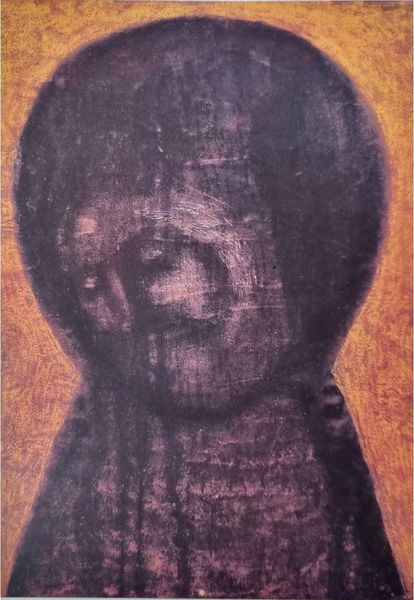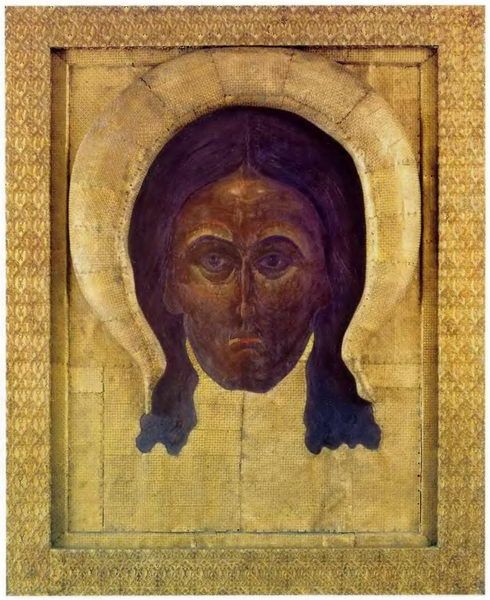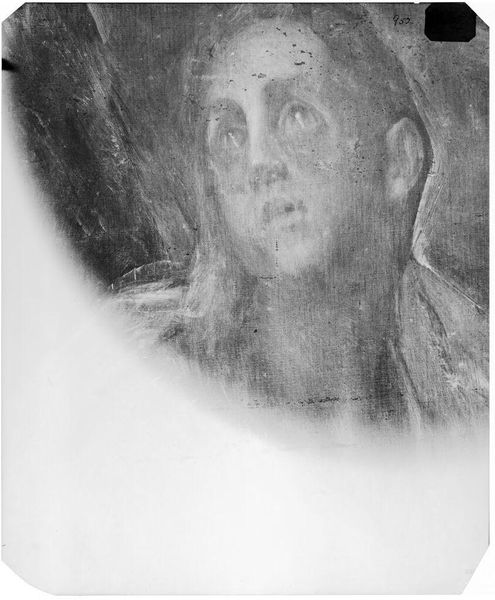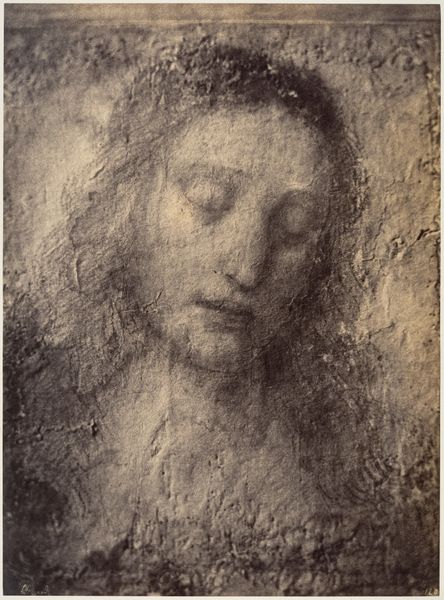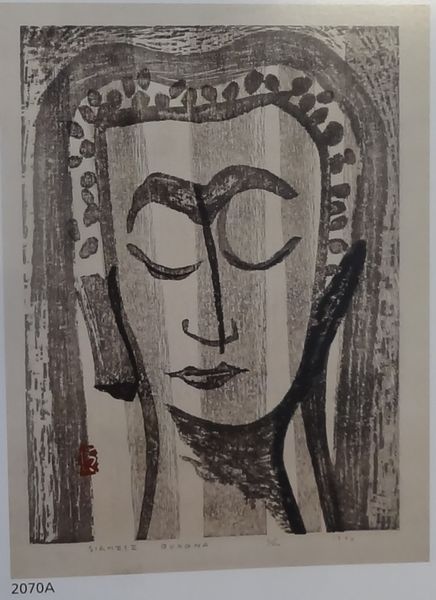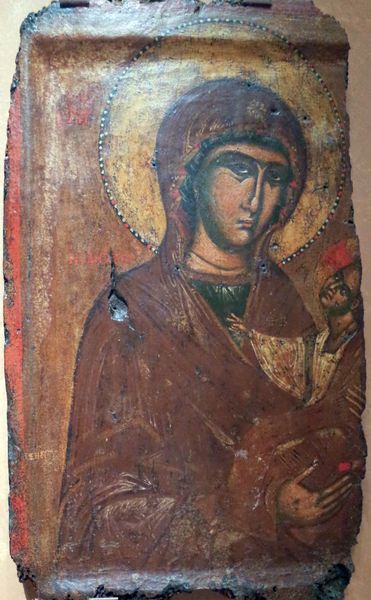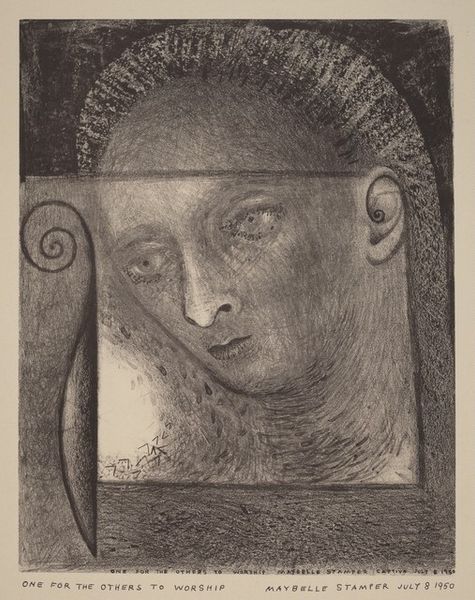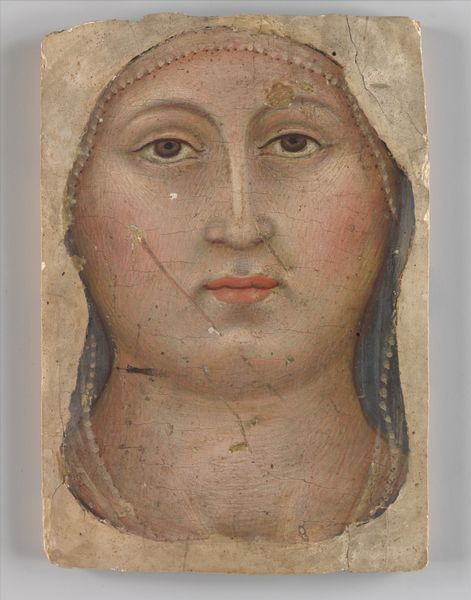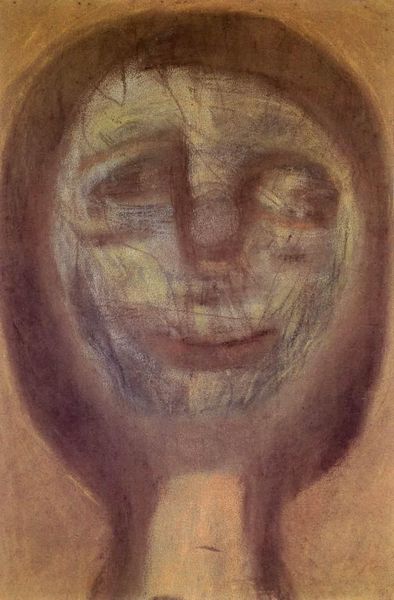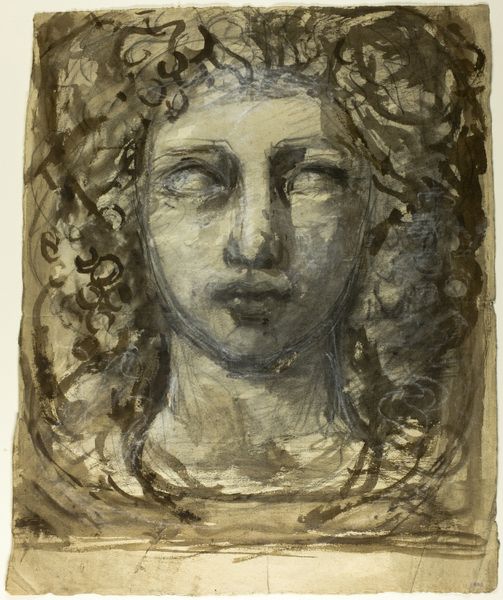
Copyright: Public domain
Editor: Here we have Vajda Lajos' "Girl Head" from 1936. It's a pastel on paper, not too large, about 50 by 35 centimeters. I find its simple forms and restricted color palette quite striking, almost ghostly. How do you approach a work like this? Curator: Immediately, I’m drawn to the materials and how they are deployed. Look at the support—paper—a relatively cheap, accessible material. Pastel, too, lends itself to immediacy and direct application, requiring less investment in elaborate equipment than oil paint, say. Knowing this was made in 1936, amidst significant socio-political upheaval in Europe, how might the accessibility of materials impact the artist’s choices and even the image itself? Editor: I hadn't thought of it that way. Perhaps the scarcity of resources influenced his artistic practice? Curator: Exactly. It pushes us to consider art-making as a form of labor, impacted by the material conditions of the time. Pastel also offers the chance to be less exacting and precious; it's far less permanent and easier to rework than other media. What does that imply about its relationship to high art or ‘fine art’ expectations? The smudging and imprecision signal an unpretentious creative undertaking, don't they? Editor: Yes, I see. So the choice of pastel and paper isn’t just aesthetic; it's tied to a specific historical and economic reality. I was mostly concerned by how pale the figure seems! Curator: And what’s the cumulative effect of so many discrete dabs of color to compose the whole form? Do the many 'units' bring the whole down, elevating the notion of craftwork to something monumental or do the subject and palette accomplish this end alone? Editor: This makes me reconsider the drawing, seeing it less as an isolated portrait and more as a reflection of its time, influenced by the limitations and possibilities of available resources. Curator: Precisely. And thinking about those material conditions enriches our understanding. Art doesn't emerge in a vacuum, its rooted to time and process.
Comments
No comments
Be the first to comment and join the conversation on the ultimate creative platform.
